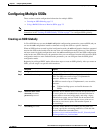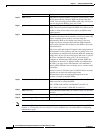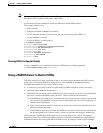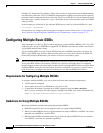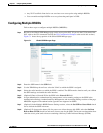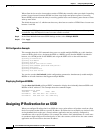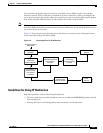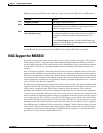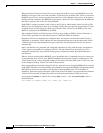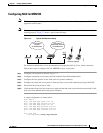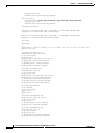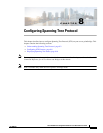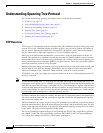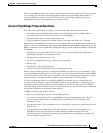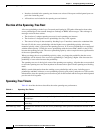
7-11
Cisco IOS Software Configuration Guide for Cisco Aironet Access Points
OL-30644-01
Chapter 7 Configuring Multiple SSIDs
NAC Support for MBSSID
Beginning in privileged EXEC mode, follow these steps to include an SSIDL IE in an SSID beacon:
Use the no form of the command to disable SSIDL IEs. By default SSIDL IEs are disabled.
NAC Support for MBSSID
Networks must be protected from security threats, such as viruses, worms, and spyware. These security
threats disrupt business, causing downtime and continual patching. Endpoint visibility and control is
needed to help ensure that all wired and wireless devices attempting to access a network meet corporate
security policies. Infected or vulnerable endpoints need to be automatically detected, isolated, and
cleaned.
NAC is designed specifically to help ensure that all wired and wireless endpoint devices (such as PCs,
laptops, servers, and PDAs) accessing network resources are adequately protected from security threats.
NAC allows organizations to analyze and control all devices coming into the network. By ensuring that
every endpoint device complies with corporate security policy and is running the latest and most relevant
security protections, organizations can significantly reduce or eliminate endpoint devices as a common
source of infection or network compromise.
WLANs need to be protected from security threats such as viruses, worms, and spyware. Both the NAC
Appliance and the NAC Framework provide security threat protection for WLANs by enforcing device
security policy compliance when WLAN clients attempt to access the network. These solutions
quarantine non-compliant WLAN clients and provide remediation services to help ensure compliance.
A client, based on its health (software version, virus version, and so on) is placed on a separate VLAN
that is specified to download the required software to upgrade the client to the software versions required
to access the network. Four VLANs are specified for NAC support, one of which is the normal VLAN
where clients having the correct software version are placed. The other VLANs are reserved for specific
quarantine action and all infected clients are placed on one of these VLANs until the client is upgraded.
Each SSID has up to 3 additional VLANs configured as “unhealthy” VLANs. Infected clients are placed
on one of these VLANs, based on how the client is infected. When a client sends an association request,
it includes its infected status in the request to the RADIUS server. The policy to place the client on a
specific VLAN is provisioned on the RADIUS server.
Command Purpose
Step 1
configure terminal Enter global configuration mode.
Step 2
dot11 ssid ssid-string Enter configuration mode for a specific SSID. You are
recommended to choose the SSID that is set to guest-mode (i.e.
advertises its SSID string into its beacon)
Step 3
information-element ssidl
[advertisement] [wps]
Include an SSIDL IE in the access point beacon that advertises
the extended capabilities for the access point, such as 802.1x
and support for Microsoft Wireless Provisioning Services
(WPS).
Use the advertisement option to include the SSID name and
capabilities in the SSIDL IE. Use the wps option to set the WPS
capability flag in the SSIDL IE.



